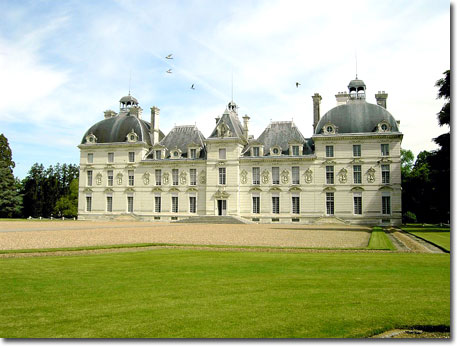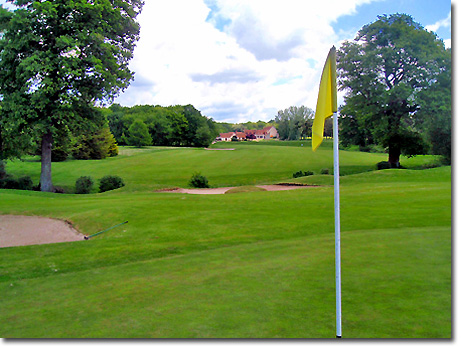| |
 
Near the
Relais des Trois Châteaux is the privately-owned Château de
Cheverny. The owners are in residence, but visitors are
welcome to tour the ground floor rooms and the gardens surrounding the
château.
On the
estate is the Château de Cheverny Golf & Country club and its
beautiful 18-hole golf course open to the public since
1989. The greens fees are in keeping with other golf courses in
France, and the clubhouse has a pro shop, a bar and restaurant, golf
cart rental, lessons and more.
|
| |
The three châteaux
that give the Relais its name are Cheverny (above), Château du
Blois
and Château de Chambord, both pictured here. Every royal
château in
the Loire Valley is unique with its own history and a story to
tell.
Visitors to Blois or Chambord will come away with an appreciation of
various architectural styles.

As an example,
Blois was begun as a Medieval fortress between the 9th and 13th
centuries. Then came King Louis XII's Gothic wing, built between
1498 and 1500 followed by François I and his Renaissance wing
constructed between 1515 and 1518. Finally, the Gaston of
Orléans, brother of Louis XIII and heir to the throne decided to
erect a totally new castle at Blois. He hired architect
François Mansart who designed and constructed a main residence
which was to be the first phase of a larger scale project. In
1638 the work was halted with the birth of Louis XIV, removing Gaston from succession to the throne. Thus the incomplete dwelling was
built in 17th century classical style.

Château de Chambord may be most famous for its double helix
stairway designed by Leonardo da Vinci. Those ascending the stair
do not see those descending at the same time! The
combination of Medieval architecture with Renaissance style make it one
of the most recognizable of all French châteaux. It served
as the hunting lodge for King François I, who resided at either
Blois or Amboise, and it was never a defensive structure. It
is, therefore, very decorative in design, is the largest
château in the Loire valley, and its design was at
François' request planned with towers, gables,chimneys and
lanterns to look like the skyline of Constantiople.
Visitors will find it a very masculine structure with so many varied
and dramatic towers that an entire day can be spent exploring
the château. In 2016 floods damaged the grounds of the
château quite severely, but fortunately the structure was
spared. Upwards of 200,000 euros was needed for repairs to this
UNESCO World Heritage site.
|

